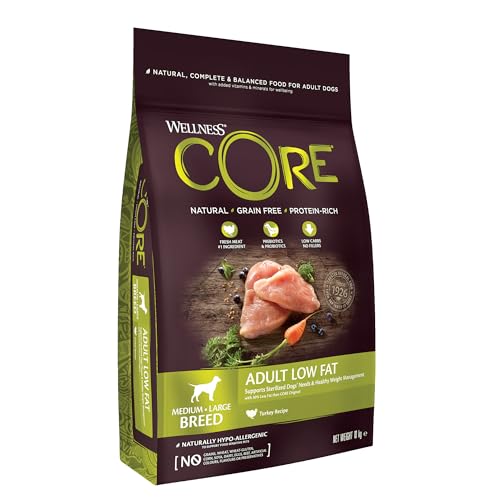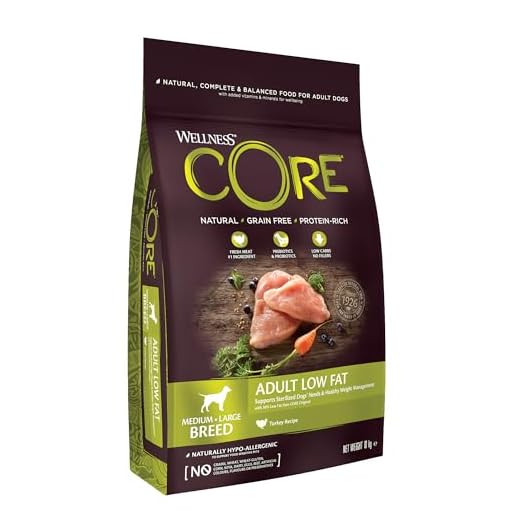




Reducing fluid buildup in your pet requires a multifaceted approach that prioritises veterinary guidance and proper monitoring. Begin by consulting your veterinarian to identify the underlying cause of the condition. Conditions such as liver disease, heart failure, or certain cancers may contribute to fluid retention, and addressing these issues is paramount.
Implement dietary modifications that include low-sodium options, as excess salt can exacerbate fluid retention. Incorporating high-quality protein sources while ensuring adequate hydration will support your pet’s overall health. Some veterinarians may recommend diuretics to assist in eliminating excess fluid; however, this should only be done under strict veterinary supervision.
Home care is also crucial. Regularly check your furry friend’s abdomen for any signs of discomfort and monitor their weight closely. Keeping a record of their eating habits, energy levels, and any unusual symptoms can provide valuable insights for your veterinarian. Engage in light, gentle exercise to encourage movement without overexertion, promoting circulation and overall well-being.
Consider alternative therapies such as acupuncture or massage, which may provide relief and improve your companion’s quality of life. Always consult with your vet before starting any new treatment. Prioritising your pet’s comfort and well-being will make a significant difference in managing this challenging condition.
Treatment Approaches for Canine Fluid Accumulation
Start with a thorough veterinary assessment. Blood tests, ultrasounds, and X-rays are crucial to identify the root cause of fluid build-up. Understanding the underlying condition will guide the management plan.
Implement a low-sodium diet. Reducing salt intake can help decrease fluid retention. Consult your vet for recommendations on suitable commercial diets or recipes.
Diuretics may be prescribed to encourage fluid excretion. Monitor your pet for any side effects, such as dehydration or electrolyte imbalances. Regular check-ups will ensure the dosage remains appropriate.
In some cases, therapeutic paracentesis might be necessary. This procedure involves removing excess fluid from the abdomen to provide immediate relief and improve comfort. Discuss this option with your vet if the situation warrants it.
Supportive care is critical. Ensure your companion remains hydrated, especially if experiencing vomiting or diarrhoea. Providing a calm and stress-free environment can aid in recovery.
Regular follow-ups are essential to monitor changes in condition. Adjustments to treatment may be needed based on your companion’s response and any new symptoms that arise.
Be attentive to any signs of discomfort or changes in behaviour. Quick reporting to your veterinarian can facilitate timely interventions, ensuring your furry friend receives the best care possible.
Recognising Symptoms of Ascites in Dogs
Observe your canine closely for signs of fluid accumulation. A noticeable swelling in the abdomen is often the first indicator. If the belly appears distended or tense, it’s a strong signal to consult a veterinarian. You might also notice your furry friend having difficulty breathing, as the pressure on the diaphragm can restrict lung capacity.
Changes in appetite are common. Affected canines may show a reduced interest in food or, conversely, may appear to eat more than usual due to a feeling of emptiness. Be alert to any sudden weight gain or loss, which could indicate fluid retention or related health issues.
Keep an eye on energy levels. Lethargy or unusual tiredness can signal underlying problems. If your pal seems less active than usual or has trouble engaging in play, it’s worth investigating further. Additionally, watch for any vomiting or diarrhoea, which may accompany other symptoms.
Unusual behaviours, like increased panting or restlessness, could also suggest discomfort. If you find your pet pacing or unable to find a comfortable position, this may indicate distress. Regular health check-ups can help catch these issues early, especially if you notice any of these signs.
For a balanced diet that supports overall health, consider exploring options like best vegetarian dog food canada. Nutrition plays a significant role in managing various conditions, including fluid retention.
Consulting a Veterinarian for Diagnosis
Seek immediate veterinary attention if you notice abnormal fluid accumulation in your pet’s abdomen. A professional examination is crucial to determine the underlying cause of this condition. Your vet will likely perform a physical assessment, including palpation of the abdomen, to gauge the extent of swelling and discomfort.
Diagnostic Procedures
Expect your vet to recommend several diagnostic tests. These may include ultrasound imaging to visualise the structures within the abdomen, blood tests to evaluate organ function, and potentially a sample of the fluid for laboratory analysis. Each test provides valuable insights, helping to distinguish between various health issues such as liver disease, heart problems, or infections.
Understanding Test Results
Once results are available, your veterinarian will explain the findings in detail. It’s important to ask questions and clarify any uncertainties. Understanding the diagnosis is key to making informed decisions about the next steps for your furry friend’s wellbeing. Don’t hesitate to discuss treatment options, potential risks, and expected outcomes to ensure you’re fully on board with the care plan.
Understanding Treatment Options Available
Medications such as diuretics are frequently prescribed to manage fluid retention. They help the body expel excess fluid through urination, thus reducing swelling. Commonly used diuretics include furosemide and spironolactone. Regular monitoring of kidney function and electrolyte levels is necessary while on these medications.
Dietary Adjustments
Adjusting nutrition can aid in managing fluid build-up. A low-sodium diet may be recommended to limit fluid retention. Incorporating high-quality protein sources is crucial, especially if liver function is compromised. Consult with a veterinary nutritionist for tailored meal plans.
Procedural Interventions
In cases where fluid accumulation is significant, a procedure called paracentesis might be performed. This involves inserting a needle into the abdomen to remove excess fluid, providing immediate relief. However, this is considered a temporary solution and does not address the underlying cause.
- Monitoring: Frequent check-ups are essential to assess response to treatments.
- Fluid Therapy: Intravenous fluids may be administered to manage dehydration, especially if oral intake is reduced.
- Surgery: In some instances, surgical intervention may be necessary to address underlying issues like tumours or organ dysfunction.
Always ensure any treatment decisions are made in consultation with a qualified veterinary professional to tailor options based on individual circumstances. Regular follow-ups are vital to adapt strategies effectively.
Managing Diet for Canines with Fluid Accumulation
Implementing a low-sodium diet is crucial. This adjustment helps reduce the fluid retention that often complicates conditions like fluid accumulation in pets. Avoid commercial dog foods high in salt, opting instead for homemade meals or specially formulated low-sodium options.
Recommended Ingredients
- Lean proteins such as chicken or turkey.
- Complex carbohydrates like brown rice or sweet potatoes.
- Fresh vegetables, including carrots and green beans, which provide essential nutrients.
Feeding Guidelines
- Serve smaller, more frequent meals to ease digestion.
- Monitor portion sizes to prevent overfeeding.
- Incorporate supplements as directed by your veterinary professional, particularly those rich in omega-3 fatty acids.
Hydration is key. Encourage drinking fresh water while being mindful of the quantity, as excessive intake can exacerbate the situation. Limiting treats is also advisable; opt for low-sodium options like apple slices or carrot sticks.
Regularly consulting with a vet ensures dietary adjustments remain aligned with the health status. Keeping a food diary can help track responses to different foods, aiding in finding the best dietary balance for your furry friend.
Monitoring Recovery and Long-term Care
Regular check-ups are non-negotiable. Schedule follow-up visits every few weeks to monitor fluid levels and assess the overall condition. Your vet will likely recommend blood tests and ultrasounds to evaluate organ function and detect any underlying issues. Keeping a log of observations at home can also be beneficial; note any changes in behaviour, appetite, or activity levels.
Home Observation Techniques
Establish a routine for monitoring. Pay attention to the abdomen’s size and firmness, noting any increases in swelling. Gently palpate the belly to check for discomfort. A simple way to assess hydration is by checking the skin’s elasticity–pinch the skin and observe how quickly it returns to normal. A slower return may indicate dehydration.
Long-term Nutritional Management
Adjust the diet based on the vet’s recommendations. Low-sodium options are crucial to prevent fluid retention. Incorporate high-quality proteins and healthy fats while avoiding ingredients that may exacerbate liver or heart conditions. Here’s a sample table of suitable foods:
| Food Type | Benefits |
|---|---|
| Lean chicken | High protein, low fat |
| Sweet potatoes | Rich in fibre, vitamins |
| Brown rice | Easy to digest, energy source |
| Green beans | Low-calorie, fibre-rich |
| Pumpkin | Supports digestion, low sodium |
Supportive care includes maintaining a calm environment. Stress can adversely affect recovery, so create a comfortable space for your furry companion. Engage in light activities that promote bonding, but avoid strenuous exercise until cleared by the vet.





